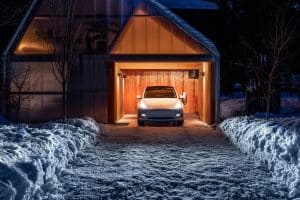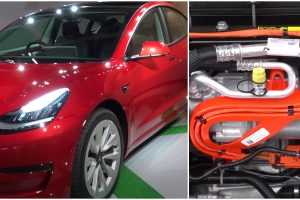Key Points
- 🚗 Mazda’s Gradual Electrification: Mazda plans to shift towards electric vehicles (EVs) with 7-8 new EV models by 2030, marking a strategic move amid a slow transition to electrification.
- ⚡ Concerns on EV Demand: Mazda CEO Masahiro Moro expresses concerns about uncertain demand for EVs, influencing the company’s intentional and gradual approach to the EV market.
- 🌍 Global Sales Targets Adjusted: Mazda aims to sell 600,000 vehicles in North America by 2025, up from the previous forecast of 500,000. However, the global target is adjusted to 1.6 million vehicles, considering lower expectations in China, Europe, and Japan.
- 🇨🇳 China Market Consolidation: Mazda plans to consolidate operations in China, expecting lower sales in the country, contributing to the adjusted global sales target.
- 📉 Shift in Market Dynamics: The North American market experiences a shift as Mexico sales surpass those in Canada, potentially offsetting declining demand in other markets.
- 🔮 EV Sales Projection by 2030: Mazda predicts that between 25 and 40 percent of its sales will be from EVs by 2030. However, Moro reiterates concerns about demand uncertainty, leaning towards the lower end of the projection.
- 🌐 Global EV Sales Performance: As of September this year, EVs constitute less than 1 percent of Mazda’s global sales, despite representing about 20 percent of the automaker’s catalog.
- 📈 Intentional Follower on EVs: Moro describes Mazda’s EV strategy as being an “intentional follower,” emphasizing a cautious approach to the ramp-up of EV models due to demand uncertainties.
- 🤔 Focus on Internal Combustion Engine (ICE) Vehicles: In the next few years, Mazda places a specific focus on selling internal combustion engine (ICE) vehicles, expecting 450,000 sales from the U.S. market.
- 🎯 Sales Focus and Adjusted Targets: The revised sales targets and focus on ICE vehicles reflect Mazda’s adaptive strategy to navigate evolving market dynamics and demand uncertainties.
The automotive landscape is undergoing a transformative journey towards electrification, and Mazda, a company known for its dynamic driving experience, is not staying on the sidelines. In a recent revelation, Mazda CEO Masahiro Moro outlined the company’s ambitious yet cautious plan to embrace electric vehicles (EVs) by 2030. Let’s delve into the key insights shaping Mazda’s electrification strategy.
Mazda’s Gradual Electrification: A Deliberate Move
Mazda, often recognized for its internal combustion engine (ICE) innovations, is now setting its sights on the electric horizon. The company plans to introduce 7-8 new EV models by 2030, signaling a strategic shift amid the automotive industry’s gradual transition to electrification.
Concerns on EV Demand: Navigating Uncertain Territories
While the roadmap to electrification is clear, Mazda’s CEO acknowledges the uncertainties surrounding EV demand. Masahiro Moro emphasizes that the pace of electrification, particularly for battery EVs, is not as rapid as anticipated. This caution leads Mazda to position itself as an “intentional follower” in the EV market.
Global Sales Targets Adjusted: Adapting to Market Dynamics
Mazda’s commitment to the North American market takes center stage, with an upward revision of sales targets. The company aims to sell 600,000 vehicles in North America by 2025, up from the initial forecast of 500,000. However, a global perspective reveals an adjusted target of 1.6 million vehicles by 2025, acknowledging lower expectations in key markets such as China, Europe, and Japan.
China Market Consolidation: Streamlining Operations
As part of Mazda’s global strategy, the company plans to consolidate operations in China. This consolidation is driven by expectations of lower sales in the region. The decision aligns with Mazda’s adaptive approach to streamline operations in response to changing market dynamics.
Shift in North American Market Dynamics: Mexico on the Rise
The North American market is experiencing a noteworthy shift as Mexico’s sales surpass those in Canada. This shift may serve as a counterbalance, offsetting potential declines in demand in other markets and reaffirming Mazda’s commitment to the diverse automotive landscape of North America.
EV Sales Projection by 2030: Balancing Ambition and Pragmatism
Looking ahead to 2030, Mazda projects that EVs will constitute between 25 and 40 percent of its sales. However, this ambitious projection comes with a dose of pragmatism, as Moro reiterates concerns about the uncertain nature of EV demand, leaning towards the conservative end of the spectrum.
Global EV Sales Performance: Navigating the Transition
As of September this year, EVs represent less than 1 percent of Mazda’s global sales. Despite this, EVs make up approximately 20 percent of the automaker’s catalog. This nuanced performance underscores the challenges and opportunities Mazda faces as it navigates the evolving landscape of global EV adoption.
Focus on ICE Vehicles: Nurturing the Combustion Legacy
In the near term, Mazda is placing a specific emphasis on selling internal combustion engine (ICE) vehicles. The company anticipates 450,000 sales from the U.S. market, showcasing a dual commitment to both the combustion legacy and the emerging electric future.
Sales Focus and Adjusted Targets: Mazda’s Adaptive Strategy
The adaptive strategy unveiled by Mazda, with a revised focus on ICE vehicles and adjusted global sales targets, reflects the company’s commitment to flexibility. Navigating the intricate balance between legacy technologies and the surge of electrification, Mazda aims to position itself as a resilient player in the ever-evolving automotive landscape.
In conclusion, Mazda’s strategic shift to electrification is a fascinating journey marked by ambition, caution, and adaptive resilience. As the automotive industry hurtles towards an electric future, Mazda’s intentional and gradual approach stands as a testament to the complexity of the road ahead.





